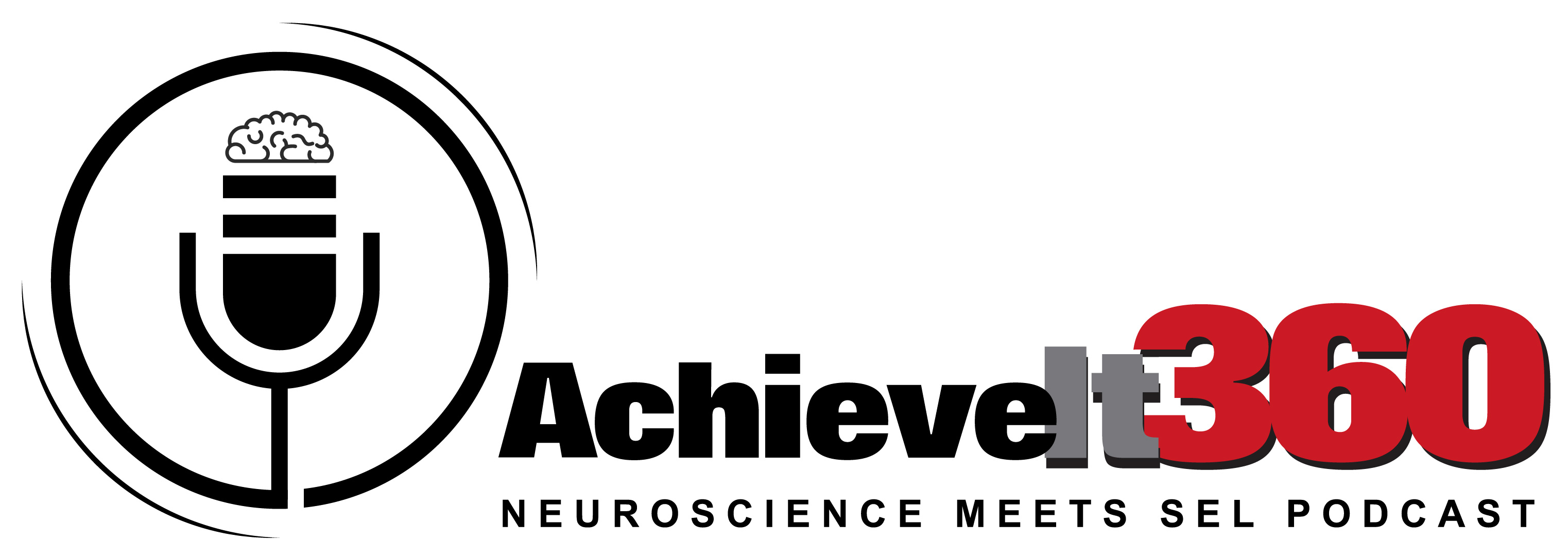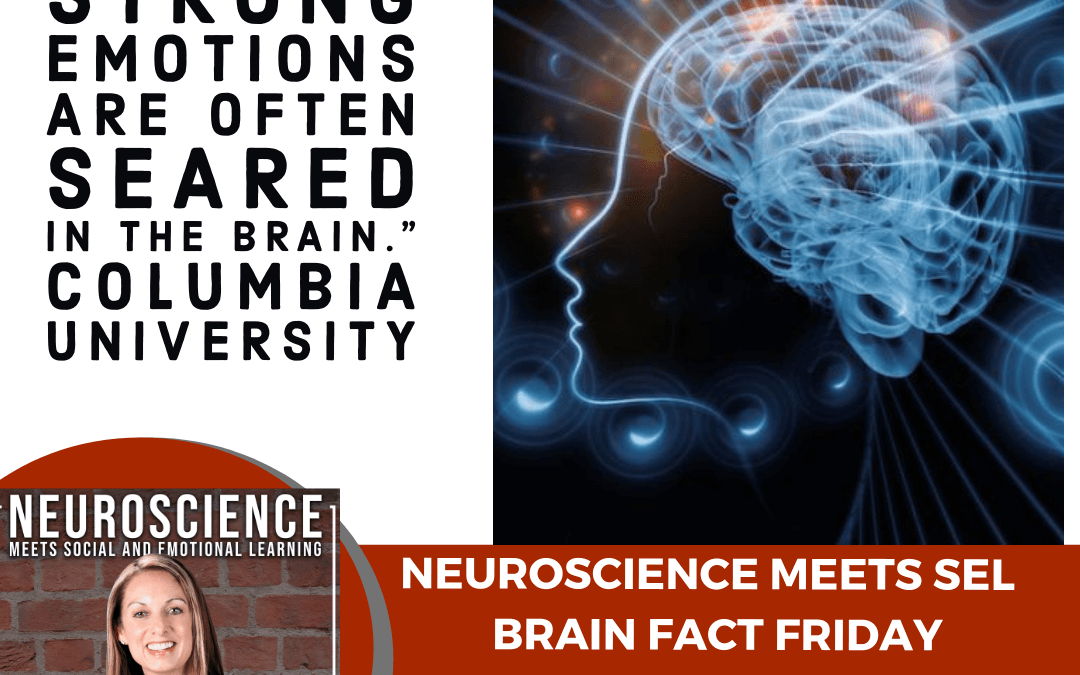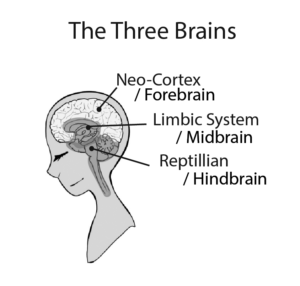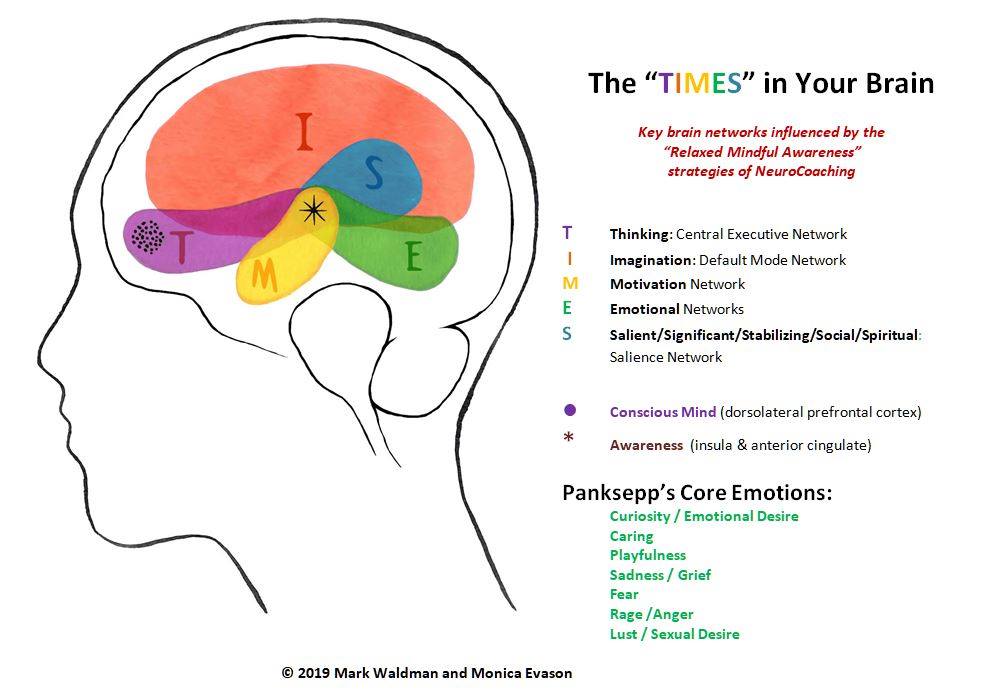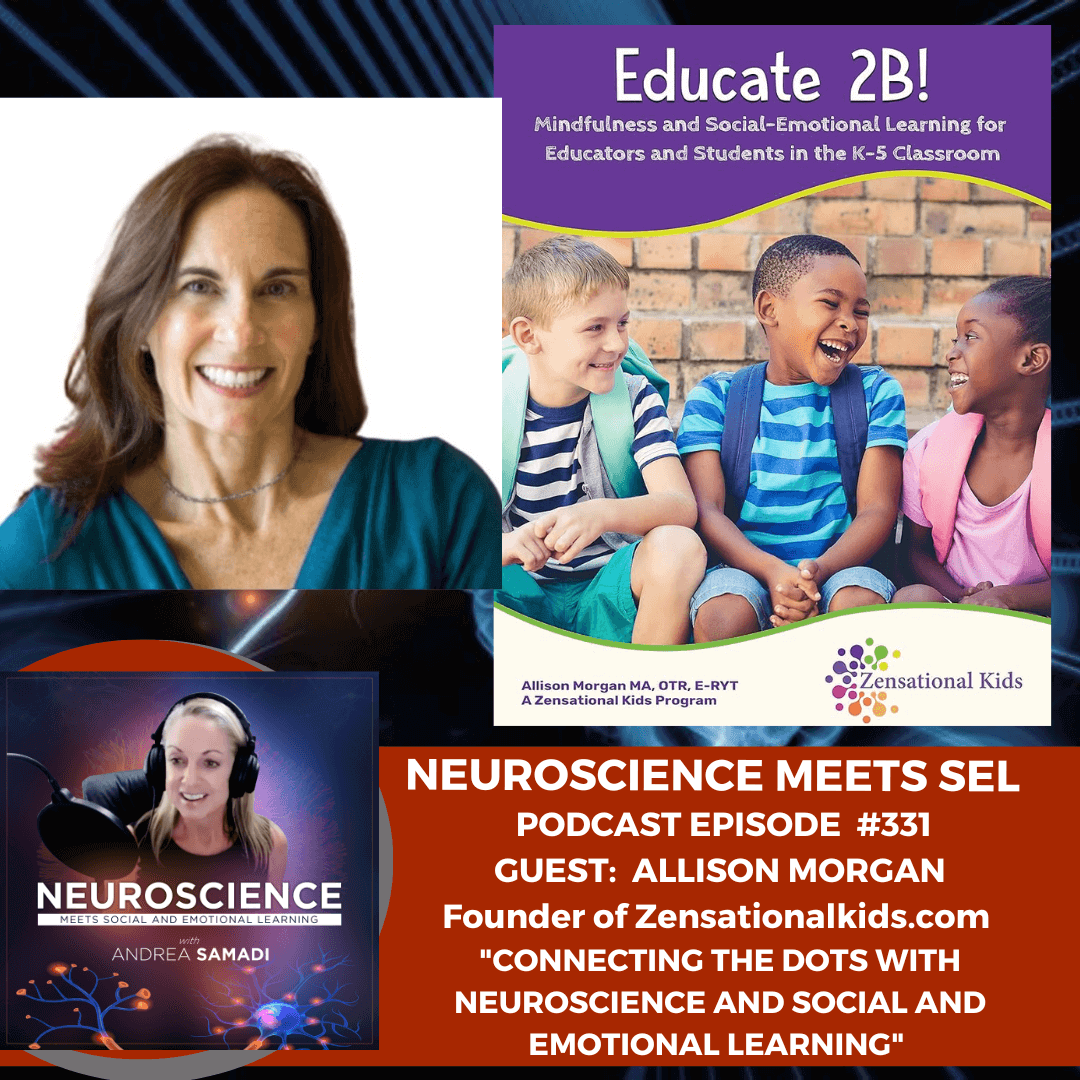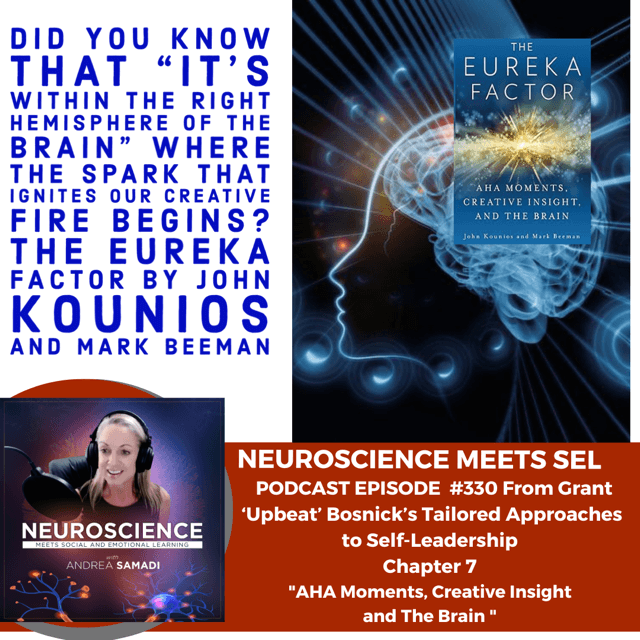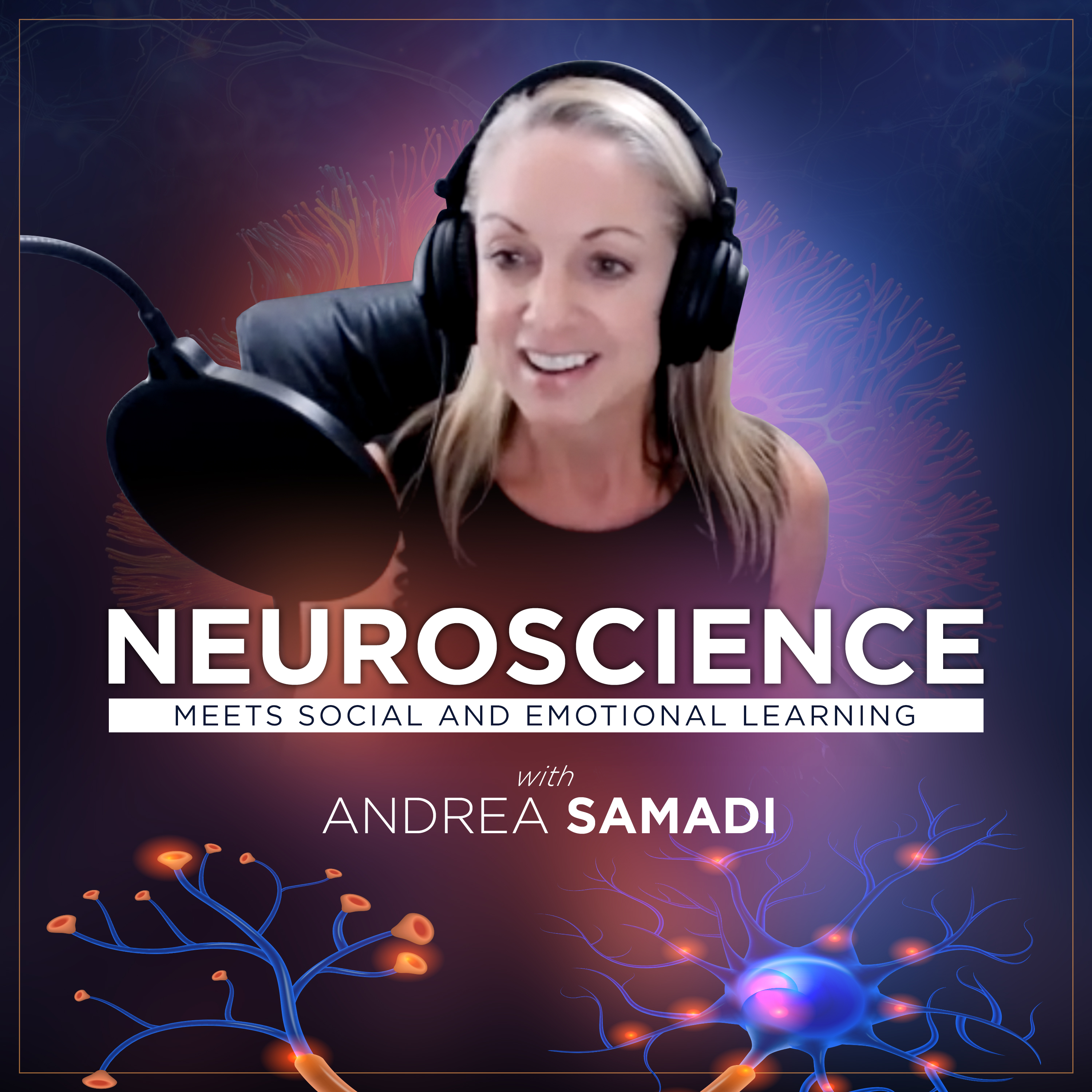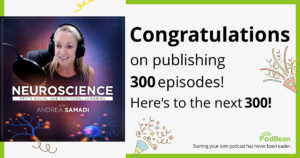Welcome back to the Neuroscience Meets Social and Emotional Learning Podcast, for Brain Fact Friday and episode #127 on Using Brain Network Theory to Understand How Emotions Impact Learning, Memory, and the Brain.
In this episode, you will learn:
✔︎ The how our emotions drive learning.
✔︎ How our memories form, and how to erase unwanted memories.
✔︎ The old way of looking at our brain (The Three Brains) vs (Brain Network Theory).
✔︎ Strategies to create balance in our brain in our classrooms and workplaces.
Welcome back, I’m Andrea Samadi, a former educator who has been fascinated with understanding the science behind high performance strategies in schools, sports and the workplace for the past 20 years. If you have been listening to our podcast for some time, you will know that we’ve uncovered that if we want to improve our social and emotional skills, and experience success in our work and personal lives, it all begins with an understanding of our brain.
We started Brain Fact Fridays last month to dive a bit deeper into some of top brain strategies we uncover in our interviews, or weekly episodes and from the feedback I have heard, these short episodes are helpful for learning about the brain in quick, easy to digest lessons, so we will continue with Brain Fact Fridays and I do appreciate the feedback!
This past weekend, I was asked to be interviewed by Ti-Fen Pan, the host of the Compass Teachers Podcast,[i] from Taiwan. She interviews people around the globe on the most current educational topics, tactics, and resources, and she sent me a list of incredible questions that really made me think. I love taking a break from being the person doing the interviews, and tune into other people’s shows, since I always want to learn something new, that I can share, and Ti-Fen really got me thinking with her podcast questions.
How Do Our Emotions Drive Learning?
Her first question to me was “what has neuroscience discovered about the relationship with our emotions and learning” and I had to think back to episode #100[ii] with Mary Helen Immordino-Yang, who is a Professor of Education, Psychology and Neuroscience at the University of Southern California and Director of the USC Center for Affective Neuroscience, Development, Learning and Education (CANDLE Center).[iii] Mary Helen is an expert on learning and the brain, especially when it comes to emotions and learning. She wrote the book Emotions, Learning and the Brain,[iv] where she talks about how “We feel, therefore we learn”[v] in Part 1 of her book and this topic is one of her most powerful YouTube publications. She is someone who I know I could spend the rest of my life following and I would learn something new from her every day. She studies the psychological and neurobiological development of emotion and self-awareness, and connections to social, cognitive, and moral development in educational settings.
I opened up her book, and if you have come from the field of education, you will recognize Howard Gardner, an American psychologist best known for his theory of multiple intelligences who wrote her foreword reminding us that “30 years ago, we had no idea that one could study human emotions that emerge slowly over time—such as admiration and awe—and compare them psychologically and neurobiologically with emotions that emerge more quickly like surprise or fear.” (page 80. Emotions, Learning and the Brain) This is a whole other topic, and I will be interviewing Mike Rousell[vi] on what the element of surprise does to our brain this summer when his book The Power of Surprise comes out, but Gardner explains that even if we are not scientists ourselves, most of us are intrigued to learn these new scientific findings. I couldn’t agree more, and with the interest that these episodes are creating, I think you would agree with me also. This thought from Howard Gardner, along with Ti- Fen’s podcast questions, made me want to put some serious thought into what exactly it is that motivates us to learn something new, and what is it that helps us to remember what we’ve learned.
For this week’s Brain Fact Friday
BRAIN FACT 1: Did you know that emotions help memories form and stick?
I could spend the next year diving deep into this brain fact, and we can learn from Jaak Panksepp[vii] a neuroscientist who concluded that humans have seven networks of emotion in the brain that begin with seeking—we are always looking for something new, the brain releases dopamine when it finds it, which awakens our perception of strong positive and negative emotions.
“Emotions form a critical piece of how, what, when, and why people think, remember and learn Mary Helen reminds us (page 146 Emotions, Learning and the Brain) she says “it is literally neurobiologically impossible to build memories, engage complex thoughts, or make meaningful decision without emotion.”
We know that humans are emotional and social beings, (hence the name of this podcast, Neuroscience Meets Social and Emotional Learning) and these skills are finally being recognized as crucial in our schools and workplaces, in addition to academic and cognitive development, or the core skills your brain uses to think, read, remember, reason, and pay attention.
Research shows that “emotion has a substantial influence on the cognitive processes in humans including perception, attention, learning, memory, reasoning and problem solving.”[viii]
This happens because our amygdala “is activated by emotional events. The amygdala boosts memory encoding by enhancing attention and perception and can help memory retention by triggering the release of stress hormones such as adrenaline and cortisol, to boost arousal.”[ix]
A New Way of Looking at Our Brain vs The Old Way
When I think about the first few years I began to learn how the brain learns, from my first few sessions with my mentor, Mark Waldman, everyone was talking about the 3 parts of the brain, and how they interact with each other. I still think it’s important to understand these 3 parts of the brain, (especially the Limbic System, the emotional part of our brain where our amygdala sits) but it’s important to change how we think about our brain from this old way, where we would maybe draw the amygdala in the limbic area of the brain, and point to it in our presentations, saying, this is the part of our brain that activated while we are under stress and we experience “fight, flight or freeze.” You might have heard that when under stress, our executive functions (in the neocortex of our brain) begin to shut down, and students cannot learn and it’s difficult to complete meaningful work. You might have even heard this being called the amygdala hi-jack or that the amygdala was responsible for the “fight or flight” response, but there’s much more involved with this part of the brain than to just keep us safe and alive.
Brain Network Theory: Creating Balance in Our Brain
Instead of thinking about just one part of our brain, or our amygdala and how it responds to stress and impacts our learning, or memory, or ability to work, I want to use Brain Network Theory to explore this a bit deeper. I did cover Brain Network Theory on episode #48[x] but here’s a review.
When looking at the brain, some people use fMRI scans, others use SPECT image scans, but I am sure you have seen these images that show how different parts of our brain light up when we are doing different things. You will no longer see studies that talk only about the individual parts of the brain—like the amygdala, or hippocampus, you will now see images that describe brain networks, nodes and connectivity. This is a fascinating discovery that comes to life with these images.
When thinking about our brain, learning, and memory, think about how our networks are all working together. You can see an image in the show notes created by Mark Waldman that shows the key networks in our brain.
Our Default Mode Network is the largest network in our brain–remember this image is just a map or metaphor to simplify the explanation of our brain networks to give you something to picture as you image your brain—not just the 3 parts of the brain in the first image, but how these networks interact with each other. How these networks are all connected to our awareness with the star in the middle of the image and how these networks overlap each other. The DMN (or the I in the diagram for imagination) contains our imagination processes like daydreaming, creative problem solving, and mind wandering and involves those thought processes that can include worry, doubts and fears that can stimulate our amygdala by sending a message to other parts of our brain that something important is going on that we should pay attention to. Our emotional state is governed by our amygdala which is “responsible for processing positive emotions like happiness, and negative ones like fear and anxiety”[xi] and it’s important to find the equilibrium between our Amygdala, our Default Mode (Imagination) Network, and Salience (Stabilizing) Network that is like the balancing part of our brain that thinks, weighs what’s important, and helps us to create the balance that we need.
Balancing Our Emotional Brain: To Help Memories Stick
Using Brain Network Theory as a tool to bring balance back to our brain, let’s imagine that our amygdala, Default Mode Network and Salience Network are playing a game of basketball. They all need to work together to create balance, to get the ball in the basket (a metaphor for whatever we are working on in our daily life). When the amygdala suddenly trips,(like it would if it was telling you there’s something you need to pay attention to—good or bad) and the ball goes out of bounds, it can be like our amygdala processing our emotions and the rest of our brain needs to step in to bring the balance back. We’ve got to learn how to interrupt the emotion (it can be good or bad emotion) so you can bring the balance and focus back to your brain to continue learning. The more rapidly we can change between these 3 networks in our day, (imagine the amygdala, Default Mode Network and Salience Network passing a basketball back and forth to each other smoothly, and quickly that you can hear the ball snapping on each networks fingers) creating more well-being and productivity with this balancing act. This is exactly what Cognitive Behavioral Therapy does, but there are some simple ways to quickly bring balance back to your brain so you can gain control of your Central Execute Network and continue learning and make those memories stick.
The Brain in the Classroom
If emotions help memories form and stick, and the amygdala is the part of the brain that tells you to pay attention to something, and remember it, whether it’s good or bad, we want to do what we can to bring balance to our student’s brains in the classroom, or our brains in the workplace.
1. Mindfulness in the Classroom: We have covered mindfulness on a few different episodes, starting with episode #25 but this strategy is the most effective way to stimulate the insula and anterior cingulate in the brain (where our awareness lies) and brings back balance and well-being that have been documented in over 4,000 research studies. Mindfulness can be taught through breath work like box breathing that’s a technique that’s a powerful tool for anyone to use to reduce stress. It’s used from “athletes to U.S. Navy Seals, police officers and nurses” and is simple for students to learn in the classroom, and hopefully take with them as a lifelong coping strategy.
2. Taking Brain Breaks for Improved Creativity: when we are asking our students to give their focused attention, think about Brain Network Theory. Focus will cause brain fatigue, and too much of it depletes your brain of glucose and depletes you. Be sure to allow your students the time to shift between their Default Mode/ Imagination network, Central Executive (Thinking) Network and Salience (Stabilizing) Network so they can gain insights that are impossible during focused only times. Allow them time to get up, rest their brain, walk around, go outside (if possible) and take short breaks every hour to keep students as productive as they can be.
3. The Amygdala First Aid Station: I first saw this idea with Dr. Lori Desautels, who suggested an area for students to go in the classroom when they feel overwhelmed. Instead of causing a fight in the classroom, students get up and go to a designated area that has calming lotion or something like that to allow students to reset their brain. I’ve put a link to some ideas in the show notes like cups to have students share their mood for the day, stress balls, popsicle stick coping strategies and many other creative ideas to calm a stressed student.
I noticed when my children were home from school during the pandemic that my youngest daughter enjoyed getting up from her desk, to go and pet the cat, before going back to do her work. These short breaks gave her a brain break and reset her focus for her next work session. I know we can’t have cats in our classrooms, but I have seen fluffy pillows work just as well for students like my daughter who can tend to get overwhelmed with her work. Dr. Lori Desautels, an Assistant Professor at Butler University (whose been on our podcast a few times) mentioned that students enjoy learning about their brain and how they can use this knowledge to improve their behavior and focus. She said “when we teach students about the amygdala, the hippocampus, neuroplasticity, and prefrontal cortex, it gives the brain science. It objectifies their behavior.” Many of her undergraduate students said “they wish they would’ve known neuroscience in middle school because students think something is wrong with them when they exhibit negative behavior. When students understand the science behind it, it intrigues them and they’re challenged to change those hard-wired circuits.” If you really want to capture a student’s attention in the classroom, teaching them the basics of how their brain works, especially to help them to achieve their goals, this information will fascinate them.
Using the Brain in the Workplace for Improved Results
1. Find Your Balance and Allow Creativity to Flow: The way to experience optimal health and well-being, that’s crucial for success in the workplace, is to create balance with your Default Mode (Imagination) Network, Central Executive (Thinking) Network and Salience (Stabilizing) Network. Notice when you are out of balance, or overly anxious–your Default Mode Network may be overly active, with worry, so learn to switch to a different brain network (since spending too much time with imagination can lead to ruminating thoughts) so switch to your Central Executive (thinking) Network, (get to work on something and notice there’s no time to worry). Work as long as you can, and then switch to your (stabilizing/values/social awareness) Network to bring back the give yourself a break. When we can give our brain breaks, it will allow for creative insights to flow during our imagination/resting states where we can have breakthroughs like the “20% time policy at Google, where the company’s engineers get a day a week to work on whatever they want” to keep their creativity flowing. See how you can replicate this process with your work.
2. Tap into Your Motivation Network: Your motivation network is what gets you out of bed in the morning and pushes you to seek out anything that has a pleasurable reward. This circuit is located in the nucleus accumbens[xviii] of the brain and is driven by your instinct and curiosity that’s one of Jaak Panksepp’s Core Emotions (Panksepp was an Estonian neuroscientist who mapped out 7 emotional circuits in the mammalian brain (the hindbrain) with play being one of them. We went deep into the importance of having fun with our work on episode #27 with Friederike Fabritius[xix] on Achieving Peak Performance where she spoke about the importance of having fun with our work, bringing us to those higher levels of peak performance. Panksepp identified another emotion called SEEKING that keeps us moving forward, engaged in new and interesting activities and work throughout our lifetime. If you have lost motivation for your work, it’s time to look or like Panksepp would say, SEEK something that your brain will find new, and interesting, that will bring you JOY. This will engage you at the brain level.
3. Listen to Your Second Brain: Your Gut Instinct Have you ever made a decision based upon your gut instinct? Neuroscience tells us “that this mind-gut connection is not just metaphorical. Our brain and gut are connected by an extensive network of neurons and a highway of chemicals and hormones that constantly provide feedback about how hungry we are, whether or not we’re experiencing stress” [xx] and many other important signals. You can strengthen your second brain with mindfulness, opening the door to one of the most powerful tools you can use to help you to become more self-aware and socially aware as you’ll begin to sense what others need and want. I once asked a business executive who was the last step in my interview process for this job I really wanted, after she offered me to position, I asked her “What made you choose me for the job?” I wanted to know what she would say, and the answered that came from this seasoned executive was not what I expected. She said “I went with my gut instinct” showing me of the power of using our second brain, or our gut, when making decisions in the workplace.
Now That Are Brain is Primed for Learning, How Do We Make Our Memories or Learning Stick?
We remember John Dunlosky focused on the importance of spaced repetition for memory formation on episode #37[xxi], (practicing a skill over and over again) and we know that memories aren’t reliable from episode #44[xxii] (that each time we recall something from our past, it changes) but what exactly is happening in the brain when we remember something?
Neuroscientist Joseph LeDoux explains memory consolidation:
“Consolidation is what happens when a memory persists. When you have a memory, it goes into short term memory and If for some reason the memory isn’t consolidated, long term memory doesn’t occur. The conversion of short-term memory to long term memory is called consolidation. This process involves that the neurons in the brain that are forming the memory undergo protein synthesis. These proteins basically glue the memory together. Reconsolidation occurs when the memory that is fully consolidated is reactivated or retrieved, has to go through another phase of protein synthesis in order for that memory to persist into the future. If you block protein synthesis after retrieval, you prevent that storage process and disrupt the memory. This is important because each time we retrieve a memory, we have to update it.”[xxiii]
He simplifies this by saying—when we first meet someone, we have a memory of that experience. When we meet that person again, we retrieve the first memory and whatever else we’ve learned about the person in the meantime are added to form the new memory. To not forget this memory, it has to be stored, and updated with what we remember from the past, with what we add to it in the present moment.
It’s not like watching a video of exactly what occurred the first time, which is the old view of how our memory works. What really happens is that “every time you take a new memory out, you must put it back in and this forms a new memory.”[xxiv]
Can We Forget Certain Memories?
LeDoux explains it is possible for people who had had a traumatic experience that they would like to forget to be given a substance that would “block the protein synthesis and prevent memories from forming which is called Reconsolidation Blocking and it doesn’t erase the memory, but just dampens the impact of the memory so it’s less troubling or arousing or troubling when it’s remembered later.”[xxv]
REVIEW OF THIS WEEK’S BRAIN FACT
BRAIN FACT 1: Did you know that emotions help memories form and stick?
This episode we went deep into where our emotions begin in our brain, with strategies to balance our brains using Brain Network Theory, in our classrooms and workplaces, so we can easily take in new information, and understand how we can retain it. We know that “memories linked with strong emotions often become seared in the brain”[xxvi] and we can even test this theory ourselves by thinking back to certain memories you might have in your life and see what you can remember about that event.
What do you remember about September 11th, 2001?
Do you remember anything about September 10th, 2001?
I couldn’t tell you a thing about Sept. 10th. Not what I ate for breakfast that day, or even much about the house I was living in at the time. But the day after, for some reason, everything seems crystal clear to me. I can see the television that I turned on while getting ready to watch the planes crash into the twin towers, can remember the sun coming in the windows, and even the shade the sunlight made on the ground in front of the television. The rest of that day is pretty clear as well, proving that emotions really do make memories stick.
I hope this episode has helped you to imagine our brains in a new light using Brain Network Theory, how we prime them for optimal learning, to ensure what we learn goes into our long-term memory, and then how to make these memories stick…if we want them to.
See you next week.
REFERENCES:
[i] The Compass Teachers Podcast with Ti-Fen Pan from Taiwan https://compassteacher.com/
[ii] Neuroscience Meets SEL Podcast Episode #100 with Mary Helen Immordino-Yang https://andreasamadi.podbean.com/e/professor-mary-helen-immordino-yang-on-the-neuroscience-of-social-and-emotional-learning/
[iii] Mary Helen Immordino-Yang, EdD https://candle.usc.edu/people/
[iv] Mary Helen Immordino Yang Emotions, Learning and the Brain (November 16, 2015) https://www.amazon.com/Emotions-Learning-Brain-Implications-Neuroscience/dp/0393709817
[v] Mary-Helen Immordino-Yang “We Feel, Therefore We Learn” Published on YouTube April 16, 2012 https://www.youtube.com/watch?v=85BZRVE6M0o&t=338s
[vi] Mike Rousell, Ph.D. The Power of Surprise: How Your Brain Secretly Changes Your Beliefs https://www.amazon.com/Power-Surprise-Secretly-Changes-Beliefs/dp/153815241X
[vii] Jaak Panksepp The Science of Emotions TEDxRanier Published on YouTube Jan. 13, 2014 https://www.youtube.com/watch?v=65e2qScV_K8
[viii] The Influences of Emotion on Learning and Memory Published August 24, 2017 Chai M Tyng, Hafeez U Amin, Mohammed N M Saad, Aamir S Malik https://www.ncbi.nlm.nih.gov/pmc/articles/PMC5573739/
[ix] What Makes Memories Stronger? https://qbi.uq.edu.au/brain-basics/memory/what-makes-memories-stronger
[x] Neuroscience Meets Social and Emotional Learning Podcast EPISODE #48 with Andrea Samadi on “Brain Network Theory” https://andreasamadi.podbean.com/e/brain-network-theory-using-neuroscience-to-stay-productive-during-times-of-change-and-chaos/
[xi] A Delicate Balance Between Positive and Negative Emotion by Anne Trafton Oct. 17, 2016 https://bcs.mit.edu/news-events/news/delicate-balance-between-positive-and-negative-emotion
[xii] Neuroscience Meets Social and Emotional Learning Podcast EPISODE #25 with Mick Neustadt on “Mindfulness and Meditation” https://andreasamadi.podbean.com/e/mindfulness-and-meditation-expert-mick-neustadt-on-how-meditation-and-mindfulness-changes-your-life-results-and-potential/
[xiii] What is box breathing? By Ana Gotter June 17, 2020 https://www.healthline.com/health/box-breathing
[xiv] https://www.pinterest.co.uk/kath6490/amygdala-first-aid-station/
[xv] Neuroscience Meet Social and Emotional Learning Podcast EPISODES #16 and #56 https://andreasamadi.podbean.com/e/lori-desautels-and-michael-mcknight-on-the-future-of-educational-neuroscience-in-our-schools-and-communities/
[xvi] Amygdala First Aid Station https://www.pinterest.co.uk/kath6490/amygdala-first-aid-station/
[xvii] Your Brain at Work by Adam Waytz and Malia Mason August 2013 https://hbr.org/2013/07/your-brain-at-work
[xviii] Neurowisdom: The New Brain Science of Money, Happiness, and Success by Mark Robert Waldman and Chris Manning, Ph.D. (2017) https://www.amazon.com/NeuroWisdom-Brain-Science-Happiness-Success/dp/1682303055
[xix] Neuroscience Meets Social and Emotional Learning Podcast EPISODE #27 with Friederike Fabritius on “Achieving Peak Performance” https://andreasamadi.podbean.com/e/pioneer-in-the-field-of-neuroleadership-friederike-fabritius-on-the-recipe-for-achieving-peak-performance/
[xx] Gut Feelings-The “Second Brain” in our Gastrointestinal Systems by Justin and Erica Sonnenburg May 1, 2015 https://www.scientificamerican.com/article/gut-feelings-the-second-brain-in-our-gastrointestinal-systems-excerpt/
[xxi] Neuroscience Meets Social and Emotional Learning Podcast EPISODE #37 with Professor John Dunlosky https://andreasamadi.podbean.com/e/kent-states-dr-john-dunlosky-on-improving-student-success-some-principles-from-cognitive-science/
[xxii] Neuroscience Meets Social and Emotional Learning Podcast EPISODE #44 “12 Mind-Boggling Brain Discoveries” https://andreasamadi.podbean.com/e/andrea-samadis-12-mind-boggling-discoveries-about-the-brain/
[xxiii] What is Memory Consolidation and Reconsolidation? Joseph LeDoux Published on YouTube November 9, 2017 https://www.youtube.com/watch?v=JKiV3FNpXhk
[xxiv] IBID
[xxv] IBID
[xxvi] Why Are Memories Attached to Emotions So Strong? July 13, 2020 https://neurosciencenews.com/emotion-memory-16631/
Podcast: Play in new window | Download
Subscribe: Apple Podcasts | RSS
